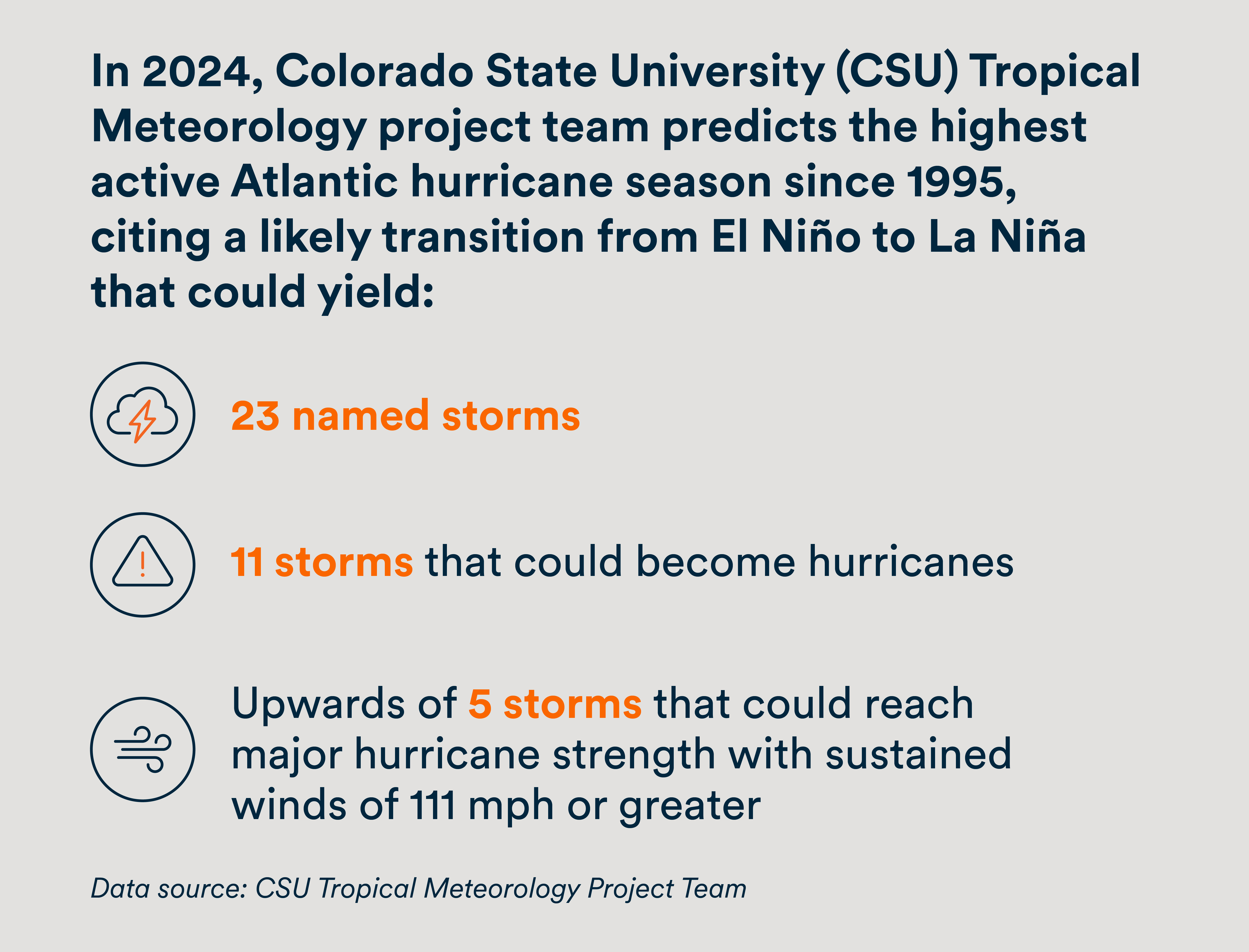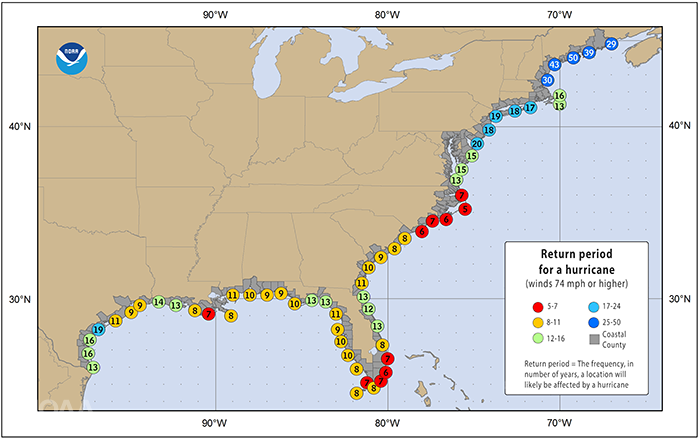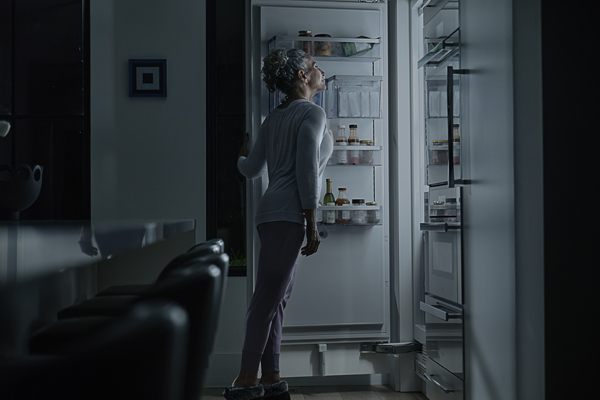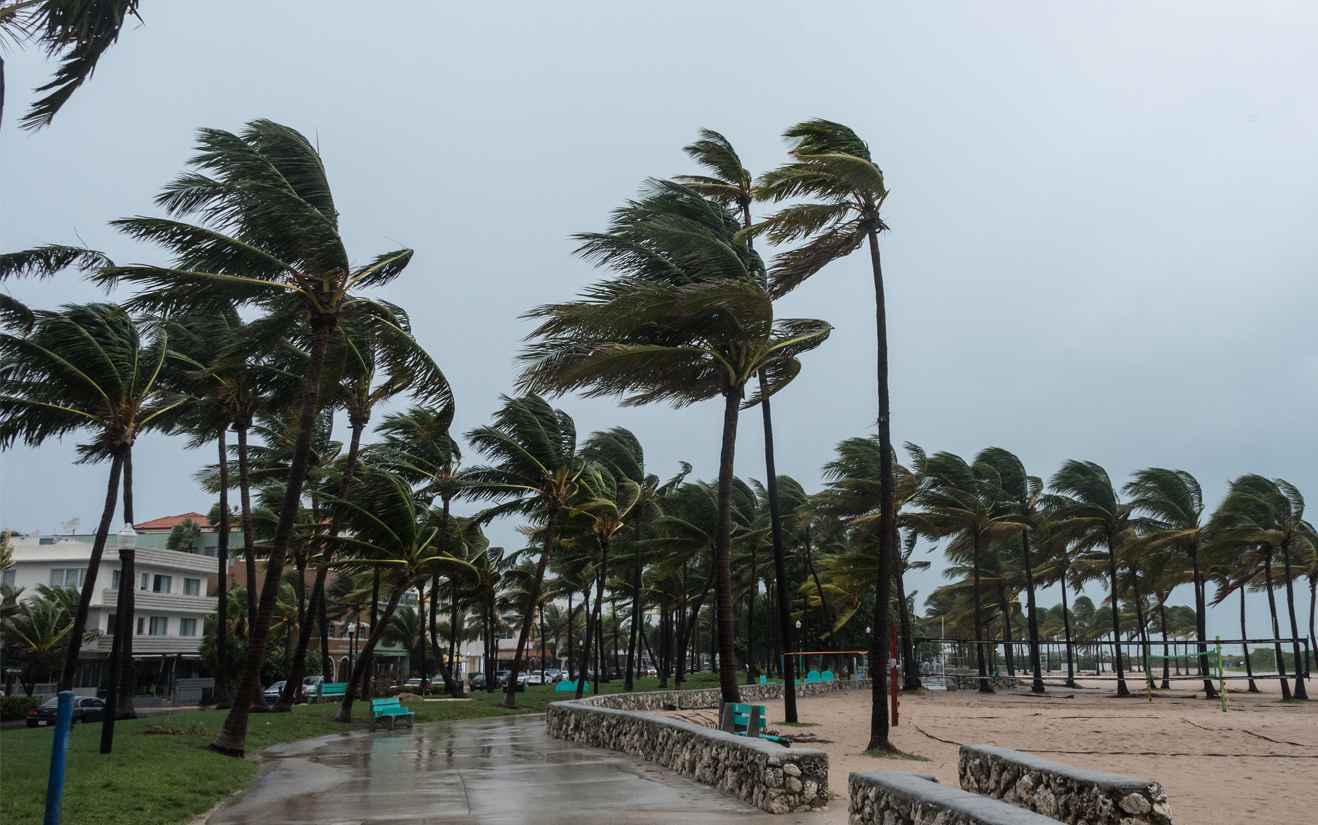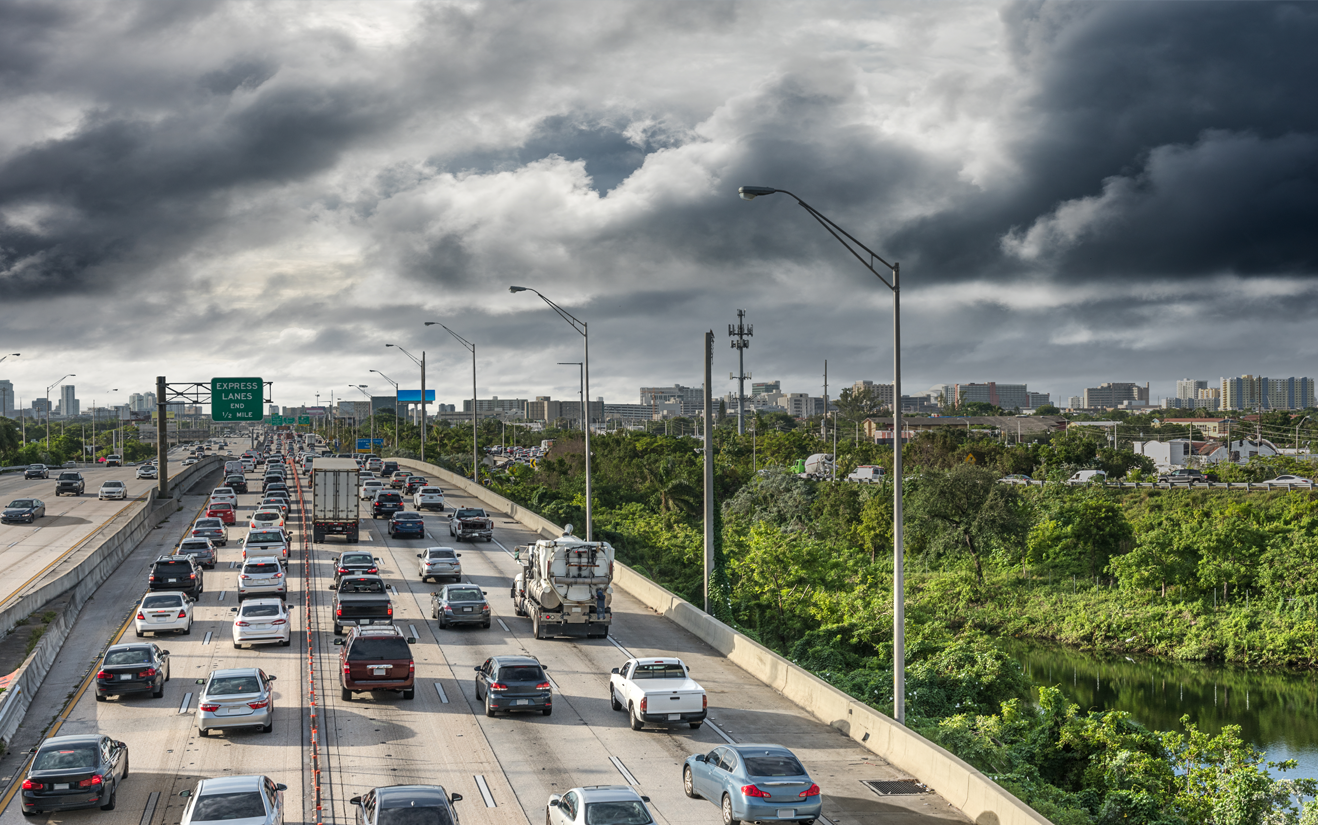Be prepared. Take action.
Now more than ever, our homes have become our sanctuary. Our safe space. Understanding what extreme natural occurrences we may be up against – and how they impact our potential power supply – is crucial.
We know that a normal hurricane season typically includes 14 storms. The 2023
hurricane season alone delivered:
- 20 named storms
- storms reaching hurricane force
- 3 hurricanes turning into major hurricanes
Data source: CSU Tropical Meteorology Project Team
